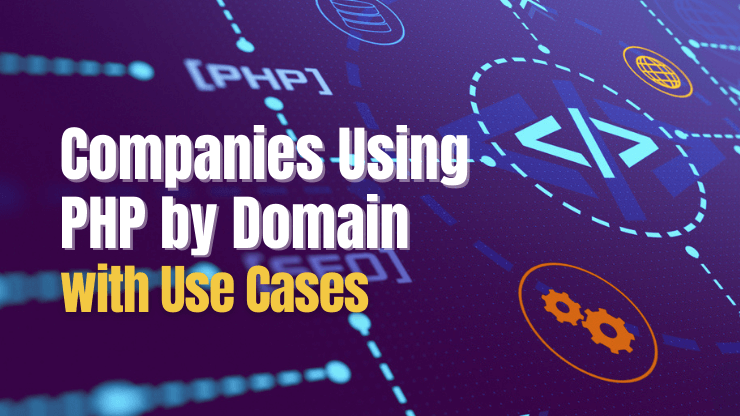
Can I use WooCommerce without payment?
Can WooCommerce be used without payment? Is it possible to be a stable player in the ecommerce market without setting up payment mechanisms? How functional would your business be without product transactions? The thought might seem daunting, especially when considering the basis of business is the exchange of goods and services for money. But, it may be helpful to understand that the basis of business also includes establishing foundation and gaining audience traction.
Many entrepreneurs face the problem of setting up online stores without a fully-functioning payment system, as confirmed by authoritative sources like TechCrunch and Forbes. TechCrunch acknowledges the challenges faced by entrepreneurs who may have their products ready but are still in the process of arranging payment processing essentials. Forbes, on the other hand, provides a statistic revealing that 25% of ecommerce startups in the USA do not have a payment gateway setup from day one. This scenario begs for a solution that allows businesses to deal with such hurdles without hampering their startup plans.
In this article, you will learn how to maneuver this challenge effectively by using WooCommerce. The main aim is to guide entrepreneurs on how to successfully launch and run their businesses without the need of a fully integrated payment system at the start of their journey. The focus will be to emphasize and explore the features of WooCommerce that make this possible.
The following sections will delve into step-by-step methods, innovative features, and examples of successful businesses that started without a payment setup running; proving that it is indeed possible and might even be beneficial for certain business models to opt for WooCommerce while awaiting essential payment protocols.

Definitions of Using WooCommerce Without Payment
WooCommerce is a customizable, open-source eCommerce platform built on WordPress. It allows anyone to create and manage an online store, with features for product listing, shopping cart, and checkout. A key component of this is the plugin’s integration with various payment gateways (like PayPal or Stripe) which handle transactions.
Using WooCommerce without payment means setting up an eCommerce site where no transactions occur. It’s often used in cases where the website functions as a digital catalog, or the goods or services are free. This involves configuring the site to bypass or disable the payment step during checkout. This mode still lets customers ‘purchase’ products, but they aren’t charged for it.
It’s important to note that the full functionalities of WooCommerce (like inventory management) are still available in this mode.
Pioneering Payment-less Perks: Leveraging WooCommerce without Payment
Understanding WooCommerce’s Payment Independence
WooCommerce is a leading eCommerce plug-in for WordPress that’s revolutionizing digital markets with versatile solutions. Indeed, you can use WooCommerce without necessitating a payment feature. This suggests its capability as a fantastic cataloguing tool. Businesses that require superior eye-catching catalogues for their products or services can effectively use WooCommerce. This platform allows you to display an exhaustive range of goods or services with detailed descriptions, photos, and pricing without activating the payment gateway.
Using WooCommerce in an exhibitionist mode entails adjusting settings to disable the ‘Add to Cart’ and checkout functionalities. This feature can be incredibly beneficial to a spectrum of businesses. For businesses who want to use the website as a platform to showcase their products or service and guide customers to a physical store, this feature is a boon. Other examples include businesses who work on inquiry basis, organizations who only deal with wholesale or businesses that want to create an online catalogue without sales functionality.
The Process of Using WooCommerce without Payment
WooCommerce’s flexibility allows it to serve multiple user requirements such as operating without a payment gateway. The platform is designed for easy customization which allows anyone, regardless of technical expertise, to modify their e-commerce strategy accordingly. The process to use WooCommerce without payment requires a few easy steps.
- Initially, navigate to the WooCommerce settings on your WordPress dashboard.
- Select the ‘Products’ tab and advance to the ‘General’ settings.
- Once there, find the ‘Product Data’ box and uncheck the ‘Enable Product Reviews’ feature. This will deactivate the shopping functionality.
- Lastly, navigate back to the WooCommerce settings and proceed to ‘Payments’. Then, simply disable the payment gateways.
With these insights, it is clear that WooCommerce emerges as a reliable and comprehensive tool that allows businesses to thrive and engage customers. It is pivotal, however, to remember that while you may not need the traditional payment setup, the entire operation of your eCommerce store is underpinned by a robust digital marketing strategy such as SEO, content marketing, and social media strategy.
Breaking Free from Transaction Shackles: Unfolding the Potential of Free WooCommerce Use
A Discerning Issue: Can WooCommerce Function Without Monetary Exchange?
Is it actually viable to employ WooCommerce without incorporating any form of reimbursement? This question alone effortlessly evokes intrigue in discerning readers. The short answer to this puzzling query is undeniably affirmative. WooCommerce itself is an open source eCommerce plugin that is extremely customizable, user friendly, and above all else, available at no cost. Being a WordPress plugin, its foundation is designed to integrate seamlessly with the platform, implying no monetary transactions are necessary to operate it. However, although WooCommerce at its core doesn’t necessitate a payment, its functionality can be constricted without making certain financial investments in premium themes, extensions, or personalized development.
Recognizing the Challenge: Functionality versus Cost Effectiveness
Scrutinizing the dilemma closely, the chief impasse that most users encounter is the battle between functionality and cost effectiveness. Not all businesses, especially start-ups and small scale ones, have the resources to invest heavily in their online presence. Although the basic configuration of WooCommerce is gratis, its add-ons and extensions are not. This could pose a limiting factor in its functionality. Furthermore, while WooCommerce flaunts a straightforward and simple-to-use design, it does necessitate a WordPress site, hosting, and a domain name, all of which demand some degree of financial commitment. To truly enjoy the full potential of WooCommerce, one would be required to incur some expenses. However, is it possible to have a balance between cost and functionality?
Exceptional Approaches: Functionality sans Significant Investment
Navigating this labyrinth, several enterprises have found ingenious ways to make the most of WooCommerce without sinking copious sums into it. One common practice is to commence operation with the free basic extension and gradually upgrade as their business grows and monetary resources become available. Rather than starting with a paid WordPress theme, these businesses opt for a free or minimal cost theme that works well with WooCommerce. Such a theme may not have all the bells and whistles of a premium theme but it does get the job done efficiently enough for a startup or a small business that cannot afford too many overhead costs.
Another example includes those who explore various other free or low-cost eCommerce plugins that are compatible with WooCommerce. This allows them to navigate around the need for higher-cost premium WooCommerce extensions while still enhancing their store’s capacity.
Lastly, regular participation in WP forums and WooCommerce communities also proves advantageous. It aids users in seeking advice, learning from the experiences of others, troubleshooting for free, and even discovering new cost-cutting dealings to enhance their experiences. Thus, these commendable practices allow for the practical utilization of WooCommerce without the burden of weighty financial investments.
Subverting the Status Quo: Unleashing your eCommerce Power through WooCommerce without Payment
Is Payment Necessary to Utilize WooCommerce?
WooCommerce is a flexible, open-source eCommerce solution that’s built on WordPress. The question on everybody’s lips is, can you really make use of WooCommerce without a payment system? The straightforward response is, yes, you can! Making use of WooCommerce does not mandatorily require an established payment system. The platform is incredibly customizable and versatile. This enables users to tailor their WooCommerce store to their particular needs and requirements. You can put up products on display, create a catalog, portfolio, or even a product showcase site – all without requiring a payment gateway.
Breaking Down the Challenge
However, operating WooCommerce without a payment gateway poses some issues, chiefly the question of completing transactions. The integration of payment gateways is primarily to facilitate transactions, by enabling customers to pay for products or services. Therefore, if you do not incorporate a payment system, you may feel stuck at the point of transactions. An eCommerce setup without any built-in payment system may appear to be rather inoperative. Consequently, business operations may get hampered and customers may have a less than satisfactory experience. So, it is crucial to decode ways of utilizing WooCommerce without a payment system, still providing a smooth experience to customers.
Scenarios Exhibiting the Use of WooCommerce without Payment
Let’s consider some examples. A clothing retail company wants to create a uniform online catalog for their in-store products. They utilize WooCommerce to showcase their products and prices, but they don’t want online sales. They’re only using the site as a display for customers to visit and make their buying decisions without an integrated payment gateway. Their customers would then visit the store to complete their transactions.
In another scenario, a company is using WooCommerce to display their services and corresponding pricing – photography packages, for instance. The full payment isn’t made through the website, instead, potential clients contact the team to discuss their needs. Any transactions are made directly. This example is akin to a service-based business, where individuals or companies are selling their time, expertise, or skills, instead of tangible products. They may not necessarily need an eCommerce platform with an embedded payment gateway service.
Such cases reveal that WooCommerce can indeed be used quite productively without integrating a payment system, by creatively adapting to the needs of your business.
Conclusion
Ever thought about the possibility of using WooCommerce without financial constraints? Does the prospect of expanding your e-commerce enterprise without immediate payment sound appealing? It’s fascinating to imagine what that might look like. As we have discussed in this article, WooCommerce indeed offers a unique selling platform that allows businesses to showcase and sell their products online without the need to initially spend a dime. This significant feature designates WooCommerce as an optimal solution for novice entrepreneurs and small businesses wanting to set foot in the online marketplace.
We’ve enjoyed having you on board on this enlightening journey, getting to understand the intricacies of WooCommerce, discerning its unique opportunities, and overcoming potential challenges. If these discussions have been beneficial for you, we encourage you to look into our regular articles. By following our blog, you could unlock useful strategies, tips and tricks, all designed to help increase your proficiency in e-commerce. We are invariably updating our content, ensuring that our readers always receive the most current insights into eCommerce trends and technologies.
Anticipate compelling updates and a plethora of informative posts about WooCommerce and more, in the coming weeks. These are exciting times for anyone seeking to venture into e-commerce and we are thrilled to be part of your journey. Remember, in the fast-paced world of online retail, knowledge is the power that gives your business the competitive edge it needs to thrive and excel. Stay connected with us; an interesting voyage into the fascinating world of e-commerce awaits you. We firmly believe that seasoned and novice entrepreneurs alike will find value in our future releases. Your decision to keep following our blog might be the crucial step towards transforming your business dreams into an actuality.
F.A.Q.
1. Can WooCommerce be used without integrating payment?
Yes, it is possible to use WooCommerce without integrating payment. You can disable all the payment gateways, allowing you to use WooCommerce as a product catalogue where transactions aren’t processed on the website.
2. Is there a charge for using the basic WooCommerce plugin?
WooCommerce itself is a free, open-source plugin. However, the cost may increase if you decide to incorporate premium themes, extensions or add-ons to enhance your store’s functionality.
3. Can I setup and manage a WooCommerce store without making any financial commitment?
Yes, you can set up and manage your WooCommerce store without making any financial commitment. However, to provide a better user experience and add advanced functionalities, you may need to purchase some premium plugins and themes.
4. What happens if I proceed without a payment gateway on WooCommerce?
If you proceed without a payment gateway, customers can still view your products, add them to the cart, but will not be able to checkout or make any purchases. You can use it as a product catalogue or update the payment information at a later stage.
5. Are there alternatives to payment gateways on WooCommerce?
Yes, WooCommerce allows other payment alternatives such as Cash on Delivery or Bank Transfers. These alternatives can be configured directly in the WooCommerce settings.













